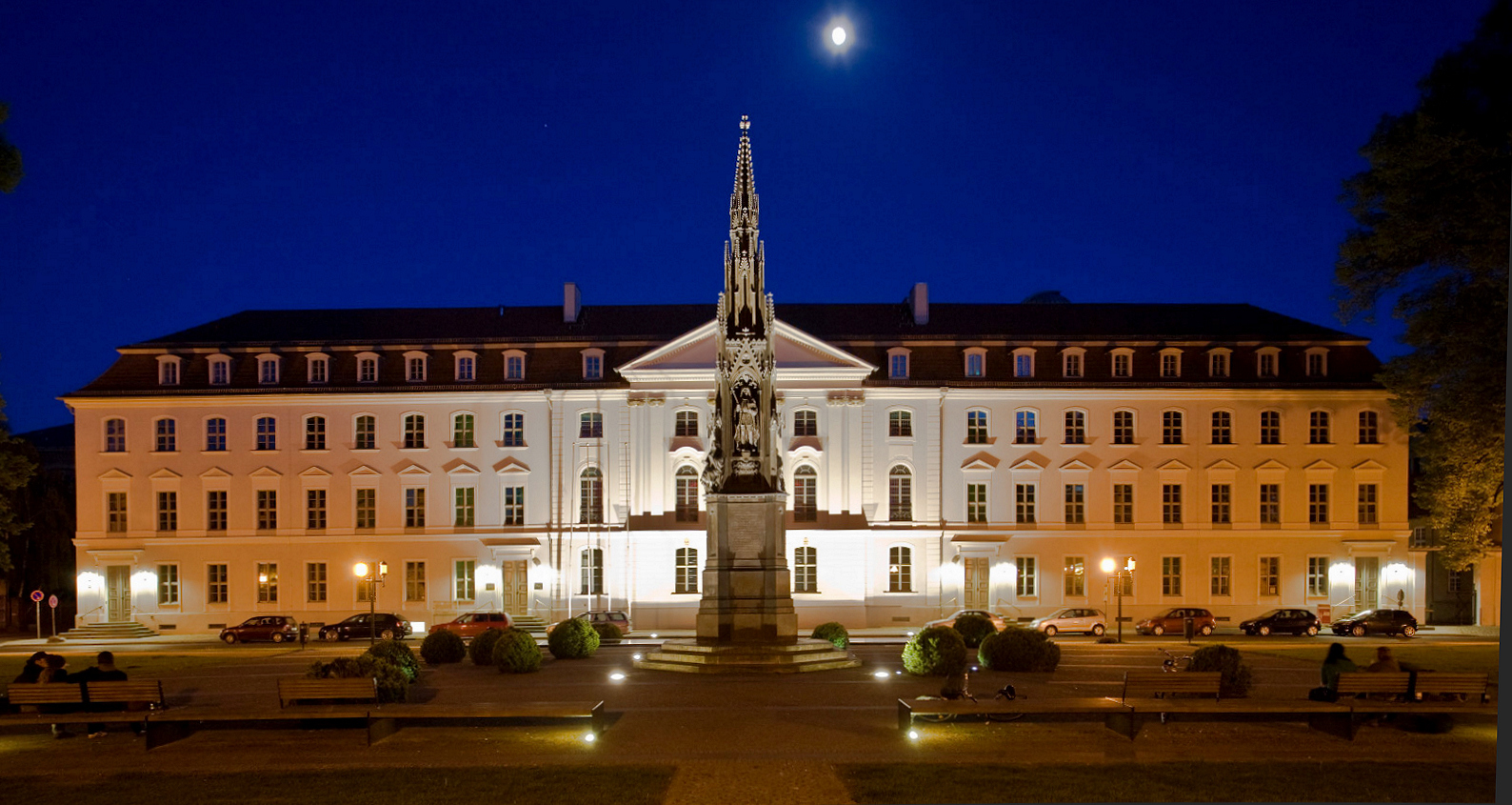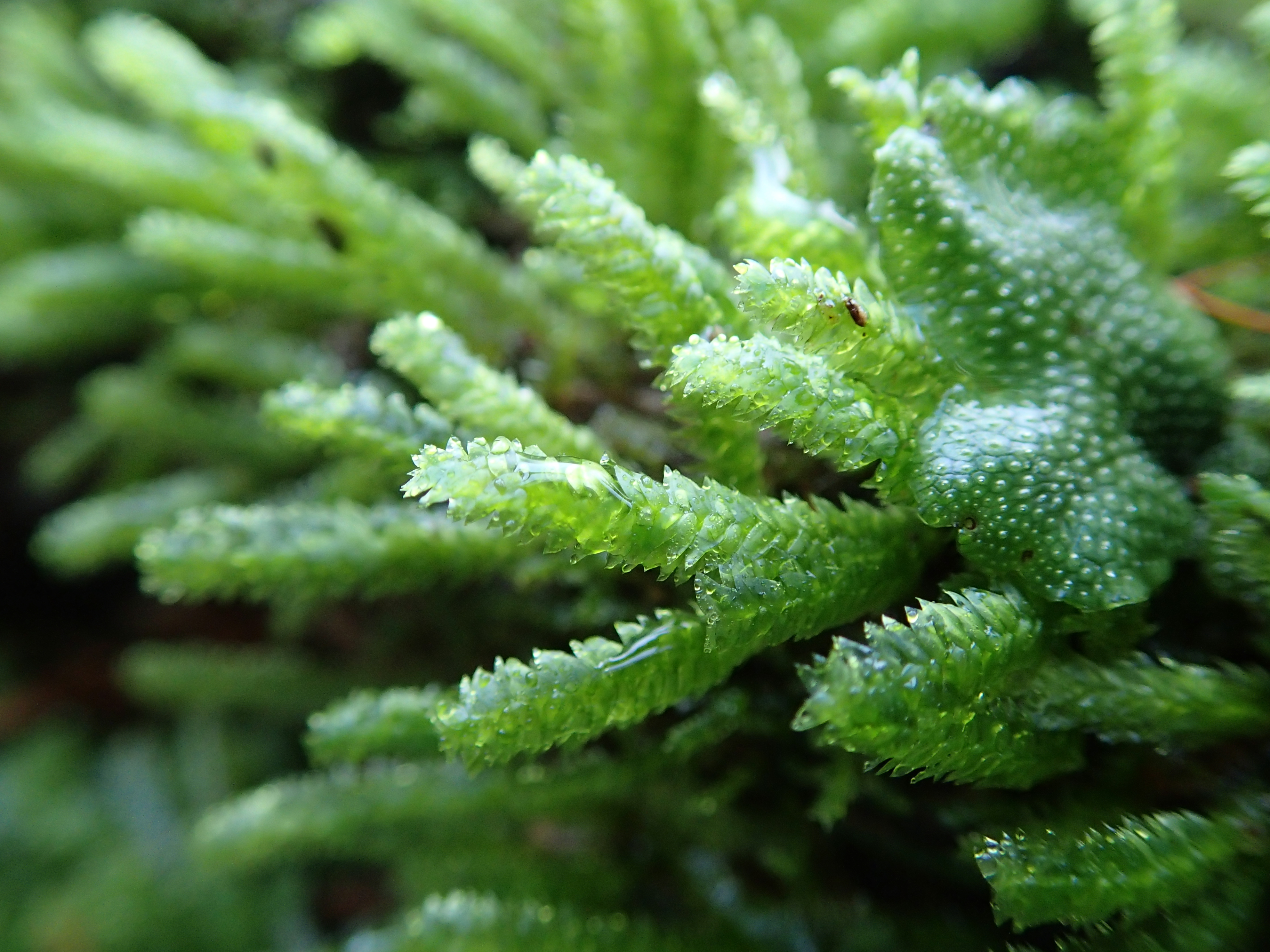|
Christian Friedrich Hornschuch
Christian Friedrich Hornschuch (21 August 1793 – 24 December 1850) was a German botanist born in Rodach, Bavaria. In 1808 he started his career as an apprentice at a pharmacy in Hildburghausen. In 1813 he moved to Regensburg as an assistant to botanist David Heinrich Hoppe (1760–1846), and afterwards worked as an assistant to Heinrich Christian Funck (1771–1839) in Gefrees, where he performed research of mosses (Bryopsida) native to the Fichtelgebirge. In 1816 he accompanied Hoppe on a botanical expedition to the Adriatic coast, then returned to Coburg to arrange his diaries, and in April 1817 continued his research with Hoppe in Tyrol and Carinthia. Later he worked as a "botanical demonstrator" at the University of Greifswald, and for a period of time studied with Carl Adolph Agardh (1785–1859) from the University of Lund. In 1820 he was appointed associate professor of natural history and botany, and director of the botanical gardens at the University of Greifsw ... [...More Info...] [...Related Items...] OR: [Wikipedia] [Google] [Baidu] |
Christian Friedrich Hornschuch
Christian Friedrich Hornschuch (21 August 1793 – 24 December 1850) was a German botanist born in Rodach, Bavaria. In 1808 he started his career as an apprentice at a pharmacy in Hildburghausen. In 1813 he moved to Regensburg as an assistant to botanist David Heinrich Hoppe (1760–1846), and afterwards worked as an assistant to Heinrich Christian Funck (1771–1839) in Gefrees, where he performed research of mosses (Bryopsida) native to the Fichtelgebirge. In 1816 he accompanied Hoppe on a botanical expedition to the Adriatic coast, then returned to Coburg to arrange his diaries, and in April 1817 continued his research with Hoppe in Tyrol and Carinthia. Later he worked as a "botanical demonstrator" at the University of Greifswald, and for a period of time studied with Carl Adolph Agardh (1785–1859) from the University of Lund. In 1820 he was appointed associate professor of natural history and botany, and director of the botanical gardens at the University of Greifsw ... [...More Info...] [...Related Items...] OR: [Wikipedia] [Google] [Baidu] |
University Of Greifswald
The University of Greifswald (; german: Universität Greifswald), formerly also known as “Ernst-Moritz-Arndt University of Greifswald“, is a public research university located in Greifswald, Germany, in the state of Mecklenburg-Western Pomerania. Founded in 1456 (teaching existed since 1436), it is one of the oldest universities in Europe, with generations of notable alumni and staff having studied or worked in Greifswald. As the fourth oldest university in present Germany, it was temporarily also the oldest university of the Kingdoms of Sweden (1648–1815) and Prussia (1815–1945), respectively. Approximately two-thirds of the 10,179 students are from outside the state, including international students from 90 countries all over the world. Due to the small-town atmosphere, the pronounced architectural presence of the alma mater across town, and the young, academic flair in the streets, Greifswald is often described as a "university with a town built around it" rather ... [...More Info...] [...Related Items...] OR: [Wikipedia] [Google] [Baidu] |
Regensburg Botanical Society
The Regensburg Botanical Society (''Regensburgische Botanische Gesellschaft''), founded 1790 in the city of Regensburg, Bavaria, Germany, is the oldest extant scientific society focused on botany. It was initially supported by the Prince-Archbishop Karl Theodor von Dalberg of Regensburg. Over the centuries the society has held scientific meetings, published scientific journals and had a botanic garden (until 1855), herbarium and library. In the twentieth century the society extended its role into nature conservation. It currently collaborates closely with the University of Regensburg. Foundation The Regensburg Botanical Society was founded 14 May 1790 by the botanist David Heinrich Hoppe. It was previously known as the Royal Bavarian Botanical Society of Regensburg (''Königlich Bayerische Botanische Gesellschaft zu Regensburg''). The first 'meeting' took place in the open air near Regensburg in what is now the Max-Schultze-Steig nature reserve. The location was adjacent to prom ... [...More Info...] [...Related Items...] OR: [Wikipedia] [Google] [Baidu] |
Adriatic Sea
The Adriatic Sea () is a body of water separating the Italian Peninsula from the Balkan Peninsula. The Adriatic is the northernmost arm of the Mediterranean Sea, extending from the Strait of Otranto (where it connects to the Ionian Sea) to the northwest and the Po Valley. The countries with coasts on the Adriatic are Albania, Bosnia and Herzegovina, Croatia, Italy, Montenegro, and Slovenia. The Adriatic contains more than 1,300 islands, mostly located along the Croatian part of its eastern coast. It is divided into three basins, the northern being the shallowest and the southern being the deepest, with a maximum depth of . The Otranto Sill, an underwater ridge, is located at the border between the Adriatic and Ionian Seas. The prevailing currents flow counterclockwise from the Strait of Otranto, along the eastern coast and back to the strait along the western (Italian) coast. Tidal movements in the Adriatic are slight, although larger amplitudes are known to occur occasi ... [...More Info...] [...Related Items...] OR: [Wikipedia] [Google] [Baidu] |
Jacob Sturm
Jacob Sturm (21 March 1771 – 28 November 1848) was a leading engraver of entomological and botanical scientific publications in Germany at the end of the 18th and beginning of the 19th century. He was born and lived in Nuremberg and was the only son of engraver Johann Georg Sturm (1742-1793), who trained him in drawing and copperplate engraving. Sturm became a celebrated insect collector and founded the Nuremberg Society for Natural History. His entomological and botanical plates are very accurately drawn and show minute details and enjoyed a great popularity among naturalists. As most of his works were published in a small format, they could be purchased by a larger public and they were very popular. During this period, Nuremberg was the centre of natural history book production in Germany. "The book ''Deutschlands Flora'',lit.: ''Germany's flora in pictures from nature with descriptions. Nuremberg, printed at the expense of the author'' 1798–1862. 163 parts (in 136 vol ... [...More Info...] [...Related Items...] OR: [Wikipedia] [Google] [Baidu] |
Bryology
Bryology (from Greek , a moss, a liverwort) is the branch of botany concerned with the scientific study of bryophytes (mosses, liverworts, and hornworts). Bryologists are people who have an active interest in observing, recording, classifying or researching bryophytes. The field is often studied along with lichenology due to the similar appearance and ecological niche of the two organisms, even though bryophytes and lichens are not classified in the same kingdom. History Bryophytes were first studied in detail in the 18th century. The German botanist Johann Jacob Dillenius (1687–1747) was a professor at Oxford and in 1717 produced the work "Reproduction of the ferns and mosses." The beginning of bryology really belongs to the work of Johannes Hedwig, who clarified the reproductive system of mosses (1792, ''Fundamentum historiae naturalist muscorum'') and arranged a taxonomy. Research Areas of research include bryophyte taxonomy, bryophytes as bioindicators, DNA sequencing, ... [...More Info...] [...Related Items...] OR: [Wikipedia] [Google] [Baidu] |
Hornschuchia
''Hornschuchia'' is a genus of flowering plants in the custard apple and soursop family Annonaceae, with all species native to South America and in eastern Brazil. It is within the Bocageeae tribe. The genus name of ''Hornschuchia'' is in honour of Christian Friedrich Hornschuch (1793–1850), a German botanist born in Bavaria. It was first described and published in Flora Vol.4 on page 302 in 1821. Species According to Kew; ''Hornschuchia bryotrophe'' is the type species In zoological nomenclature, a type species (''species typica'') is the species name with which the name of a genus or subgenus is considered to be permanently taxonomically associated, i.e., the species that contains the biological type specimen ....Pierre Auguste Joseph Drapiez References {{Taxonbar, from=Q9004795 Annonaceae genera Annonaceae Plants described in 1821 Flora of Brazil ... [...More Info...] [...Related Items...] OR: [Wikipedia] [Google] [Baidu] |
Annonaceae
The Annonaceae are a Family (biology), family of flowering plants consisting of trees, shrubs, or rarely lianas commonly known as the custard apple family or soursop family. With 108 accepted genera and about 2400 known species, it is the largest family in the Magnoliales. Several genera produce edible fruit, most notably ''Annona'', ''Anonidium'', ''Asimina'', ''Rollinia'', and ''Uvaria''. Its type genus is ''Annona''. The family is concentrated in the tropics, with few species found in temperate regions. About 900 species are Neotropical, 450 are Afrotropical, and the remaining are Indomalayan. Description The species are mostly tropical, some are mid-latitude, deciduous or evergreen trees and shrubs, with some lianas, with aromatic bark, leaves, and flowers. ; Stems, stalks and leaves: Bark is fibrous and aromatic. Pith septate (fine tangential bands divided by partitions) to diaphragmed (divided by thin partitions with openings in them). Branching distichous (arranged in two ... [...More Info...] [...Related Items...] OR: [Wikipedia] [Google] [Baidu] |
Christian Gottfried Daniel Nees Von Esenbeck
Christian Gottfried Daniel Nees von Esenbeck (14 February 1776 – 16 March 1858) was a prolific German botanist, physician, zoologist, and natural philosopher. He was a contemporary of Goethe and was born within the lifetime of Linnaeus. He described approximately 7,000 plant species (almost as many as Linnaeus himself). His last official act as president of the German Academy of Natural Scientists Leopoldina was to admit Charles Darwin as a member. He was the author of numerous monographs on botany and zoology. His best-known works deal with fungi. Biography Nees von Esenbeck was born in Schloss Reichenberg near Reichelsheim (Odenwald). He showed an early interest in science and, after receiving his primary education in Darmstadt, he went on to the University of Jena, obtaining his degree in biology (natural history) and medicine in 1800. He practiced as a physician for Francis I (Erbach-Erbach), but he had developed a great interest in botany during his university studies, ... [...More Info...] [...Related Items...] OR: [Wikipedia] [Google] [Baidu] |
Botanical Gardens
A botanical garden or botanic gardenThe terms ''botanic'' and ''botanical'' and ''garden'' or ''gardens'' are used more-or-less interchangeably, although the word ''botanic'' is generally reserved for the earlier, more traditional gardens, and is the more usual term in the United Kingdom. is a garden with a documented collection of living plants for the purpose of scientific research, conservation, display, and education. Typically plants are labelled with their botanical names. It may contain specialist plant collections such as cacti and other succulent plants, herb gardens, plants from particular parts of the world, and so on; there may be greenhouses, shadehouses, again with special collections such as tropical plants, alpine plants, or other exotic plants. Most are at least partly open to the public, and may offer guided tours, educational displays, art exhibitions, book rooms, open-air theatrical and musical performances, and other entertainment. Botanical gardens are ... [...More Info...] [...Related Items...] OR: [Wikipedia] [Google] [Baidu] |
Botany
Botany, also called , plant biology or phytology, is the science of plant life and a branch of biology. A botanist, plant scientist or phytologist is a scientist who specialises in this field. The term "botany" comes from the Ancient Greek word (''botanē'') meaning " pasture", " herbs" "grass", or " fodder"; is in turn derived from (), "to feed" or "to graze". Traditionally, botany has also included the study of fungi and algae by mycologists and phycologists respectively, with the study of these three groups of organisms remaining within the sphere of interest of the International Botanical Congress. Nowadays, botanists (in the strict sense) study approximately 410,000 species of land plants of which some 391,000 species are vascular plants (including approximately 369,000 species of flowering plants), and approximately 20,000 are bryophytes. Botany originated in prehistory as herbalism with the efforts of early humans to identify – and later cultivate – ed ... [...More Info...] [...Related Items...] OR: [Wikipedia] [Google] [Baidu] |





